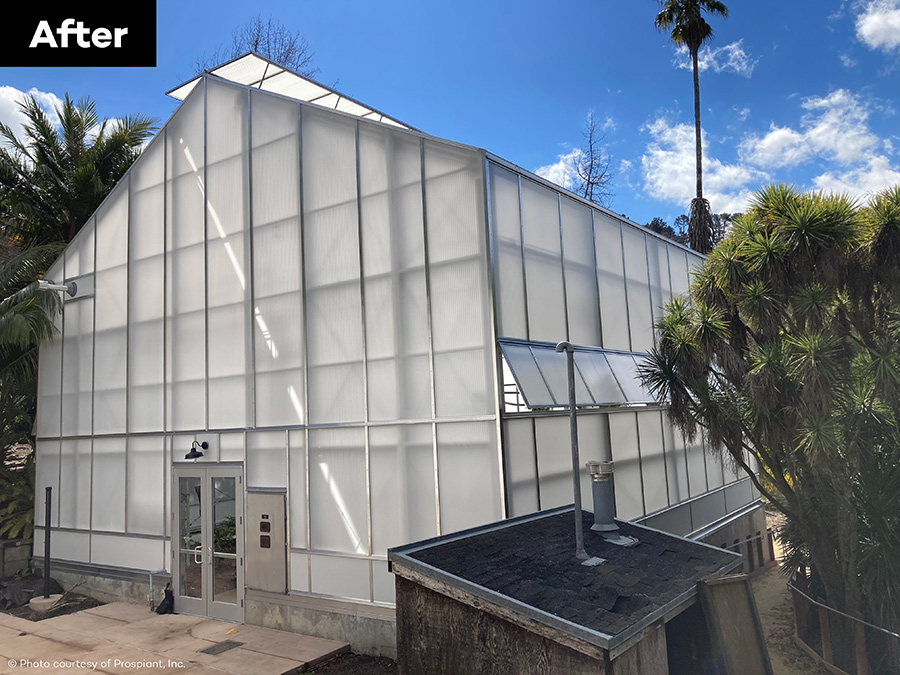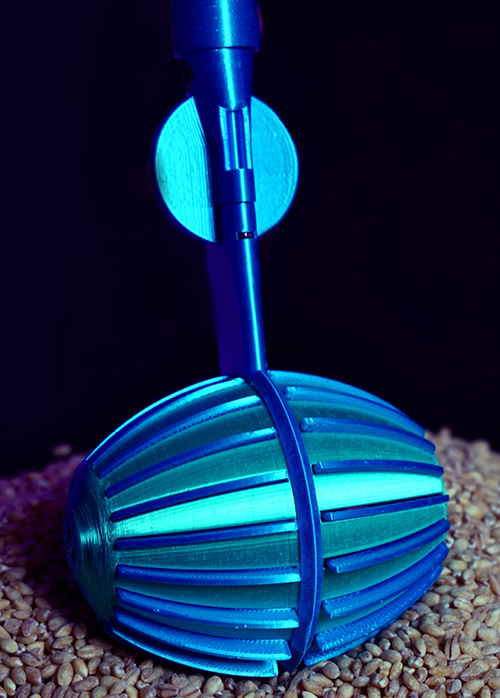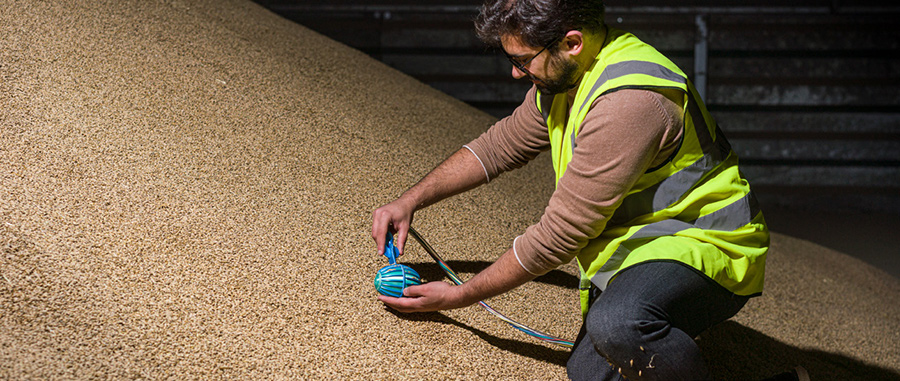
Dempsey oversaw the project to its completion in early 2021. The greenhouse, measuring 36′ wide by 42′ long, was last remodeled in 1987. It sits in Berkeley’s Botanical Garden, a 34-acre space filled with more than 12,000 different plant species and serves as a museum for visitors to enjoy the numerous plants growing inside.
The previous design, built in the early 1980s, was constructed using glass panels. A spray shade was added to the glass each year to help regulate the inside temperature and provide shade for tropical plants. Spray shade application is typical for conservatories and greenhouses where interior shade systems were not included in the original design, as it provides proper shade for the plants. This method is not as commonly used on production greenhouses, as they tend to use automatic operable interior shade systems. Such systems feature fabric curtains that sit on retention wires below the glazing where they can be opened or closed, depending on the weather, to adjust the amount of light the plants receive. This automated system can be expensive and it detracts from the visual look and feel of the inside of the greenhouse — a typical reason why most museums and botanical garden greenhouses choose spray shade instead.

Although spray shade is a common method of heat regulation, having to renew the spray shade on the Berkeley greenhouse was a tedious process and left the exterior looking splotchy as it faded over time. The glass itself was no longer holding up, either: Slipped glass was causing water to infiltrate in certain spots, making this the perfect time to investigate a solution that was both practical and appealing to the eye.
Dempsey, knowing the challenges they were facing, suggested the switch to ACRYLITE acrylic. At first the plan was to have clear ACRYLITE Alltop on the bottom portion of the greenhouse and ACRYLITE Resist multi-skin light white halfway up the walls. However, the Berkeley team knew they wanted a more cosmetically appealing look for the outside of the greenhouse and opted for the light white material throughout the structure to provide a cleaner, more uniform appearance.
The requirements in California around structural review and other architectural requirements are one of the toughest in the nation, which made this project a little difficult to navigate at the onset. However, Prospiant’s extensive experience in greenhouse design combined with the support of the technical experts at Roehm America, helped move the process along. Roehm’s technical experts often support customers with detailed project review questions about the structural capabilities, installation methods and fire performance of ACRYLITE materials. With both teams navigating the process, they were able to handle the approvals and push the project forward to completion.
The switch from glass to ACRYLITE Resist multi-skin light white acrylic has brought about significant benefits. The acrylic provides an exceptional atmosphere for the plants to thrive; promoting shade in the hot summer months and a good U-factor during the winter months to hold in the heat. ACRYLITE Resist also features a No-Drip anti-condensate technology. For the Berkeley greenhouse, this special coating featured on one side of the material, was installed on the interior. This was decided on as condensation build-up, due to the high humidity required for the tropical plants inside, was expected. This water-dispersing layer causes condensation to flow off as a continuous self-cleaning film leaving the interior looking like new even after a significant amount of time.
In addition, this coating has anti-algae properties to prevent growth on the moist interior surface of the greenhouse — a benefit designed to last throughout the lifecycle of the acrylic glazing. Just the mere design of how acrylic glazing is installed compared to glass panels showed to be of benefit as well. Glass panels tend to be small with a lot of aluminum frames that disrupt the flow of water and create collection points for algae growth. ACRYLITE panels, by contrast, are available in panel lengths up to 36′ for smooth, continuous walls and roofs.
Lastly, the acrylic provides strength and longevity. “Our 16 mm product offers a high insulating value and is also strong structurally. For example, if you’re dealing with wind loads, you don’t have to put as much support underneath it. It’s a tough, strong product which allows designers to place less visually obstructing supports across the acrylic panels,” said David Morrison, technical engineer at Roehm America. This renovation was a success on all fronts and will be a place of botanical enjoyment for visitors for years to come. www.acrylite.co.

UK firm Crover won a Growth Garage challenge developed by Mitsubishi Chemical Advanced Materials (MCAM). Growth Garage supports innovative companies and helps them tackle some of the biggest engineering challenges in the world today.
Crover is on a mission to help maintain optimum storage conditions and reduce losses for grain storage operators. Its unique robotic solution improves and automates monitoring and management activities. The idea was developed by Crover founder Dr. Lorenzo Conti as part of his research into granular physics. The Crover team’s vision is to radically improve the efficiency of the grains, oilseeds and protein crops (GOP) supply chain and the associated bulk storage and to reduce grain losses due to spoilage.
Monitoring quality while grain is being stored is a challenge. Often, it seems that the grain is fine, then suddenly everything is spoiled and must be thrown away. Grain storage operators are identifying problems too late to save the grain. Crover wanted to develop a solution that ensures what goes into silos and sheds is the same quality as when it comes out. One of the other challenges is around health and safety. The standard way to monitor the grain is manually, either with probes used to take samples and direct measurements at various points, which can be dangerous, or with static probes, which have limited reach and don’t always reflect the condition of the whole grain bulk. In some silos, you can’t do these tests at all.
The robotic device developed by Crover maps the conditions inside grain bulks to identify suboptimal storage conditions and mixes the grain in-situ, which helps maintain its quality. The core technology behind the Crover robot comes from years of research in granular physics and rheology (the study of how granular materials “flow”). Crover’s method of movement in granular materials is made possible by a new physical discovery and patented (UK) technology. Like airplane wings in the air or a boat’s propellor in water, it allows an object to move through solid grains. It works in any environment made of bulk solids and powders, such as sand dunes, heaps of grain, mineral bulks, chemical powders and potentially even loose Martian terrain.
The device enables storage operators to make better and more informed decisions based on high resolution monitoring data. Its onboard moisture and temperature sensors allow users to intervene only when necessary and avoid the costly impact of late or incorrect interventions. The robotic device can reach and monitor every corner of the bulk material.

The platform can be integrated into existing monitoring systems, improving their efficacy. It can also replace them altogether, even on older storage structures, with minimal retrofitting. New technologies and sensors can easily be integrated into the device.
Through their Growth Garage challenges, MCAM offers their expertise, material infrastructure and resources to innovative start-ups and scale-ups to support their development of creative solutions that enable the circular economy. At the beginning of 2021, MCAM launched its first Growth Garage challenge, offering the opportunity for engineering entrepreneurs and innovators to get their ideas from pitch to product. Winners receive MCAM’s full support and expertise to help develop their projects from initial prototype to final product in three months. www.growthgarage.mcam.com.